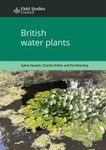![Organic Substances and Sediments in Water, Volume 3: Biological Organic Substances and Sediments in Water, Volume 3: Biological]()
Click to have a closer look
About this book
Contents
Related titles
About this book
This three-volume set provides the best information available regarding the many interdisciplinary factors affecting organic substances associated with particulates in water.
Contents
VOLUME III: BIOLOGICAL INTRODUCTION. Organic Contaminants in Sediments: Biological Processes (John F. McCarthy, Peter F. Landrum, and Anthony V. Palumbo). INTEGRATING CHEMISTRY AND TOXICOLOGY OF SEDIMENT-WATER INTERACTIONS. Making the Transition from Toxicology to Ecotoxicology (James R. Pratt). The Case for Modelling Sediment-Water Interactions in Aquatic and Marine Systems (Donald Mackay, Miriam Diamond, and Warren Stiver). Application of Biotechnology to Water Quality Monitoring (Ivor T. Knight and Rita R. Colwell). UPTAKE AND ACCUMULATION of Sediment-Associated Contaminants. Bioavailability. A Clam's Eye View of the Bioavailability of Sediment-Associated Pollutants (Henry Lee II). The Influence of Water Column Dissolved Organic Carbon on the Uptake of 2,2',4,4',5,5'-Hexachlorobiphenyl (PCB 153) by Daphnia Magna (Hayla E. Evans). Binding and Bioavailability of Organic Micropollutants in Natural Waters: Effects of the Quality and the Quantity of Dissolved Organic Material (Jus si Kukkonen, John F. McCarthy, and Aimo Oikari). Solvent-Filled Dialysis Membranes Mimic Bioaccumulation of Pollutants in Aquatic Environments (Anders SUdergren). Bioaccumulation. Bioaccumulation of Molecular Markers for Municipal Wastes by Mytilus edulis (Paul M. Scherblom and Robert P. Eganhouse). Bioaccumulation of p, p'-DDE and PCB 1254 by a Flatfish Bioindicator from Highly Contaminated Marine Sediments of Southern California (David R. Young, Alan J. Mearns, and Richard W. Gossett). BIODEGRADATION. Anaerobic Dechlorinations. Dechlorinations of Polychlorinated Biphenyls in Sediments of New Bedford Harbor (James L. Lake, Richard J. Pruell, and Frank Osterman). Anaerobic Biotransformation of Halogenated Pesticides in Aquifer Slurries (Joseph M. Suflita, K. Ramanand, and Neal Adrian). Reductive Dechlorination of Dichlorophenols in Anaerobic Pond Sediments (Dorothy D. Hale, John E. Rogers, and Juergen Wiegel). Cometabolism. The Effects of Groundwater Chemistry on Cometabolism of Chlorinated Solvents by Methanotrophic Bacteria (Anthony V. Palumbo, William Eng, Gerald W. Strandberg). Anaerobic Degradation of Aromatic Hydrocarbons and Aerobic Degradation of Trichloroethylene by Subsurface Microorganisms (Dunja Grbic-Galic, Susan M. Henry, E. Michael Godsy, Elizabeth Edwards, and Kevin P. Mayer). Biodegradation of Organic Contaminants in Sediments: Overview and Examples with Polycyclic Aromatic Hydrocarbons (Carl E. Cerniglia). The Use of Chemical Diffusing Substrata to Monitor the Response of Periphyton to Synthetic Organic Chemicals (Scott D. Schermerhorn, Gina Abbate, and Roy M. Ventullo). Genetic Engineering and Molecular Techniques. Molecular Analysis of Biodegradative Bacterial Populations: Application of Bioluminescence Technology (Gary S. Sayler, J.M. Henry King, Robert Burlage, and Frank Larimer). Index.
Customer Reviews



















![Coraux Constructeurs de Récifs des Caraïbes [Coral Reef Builders of the Caribbean]](http://mediacdn.nhbs.com/jackets/jackets_resizer_medium/24/249211.jpg?height=150&width=99)














